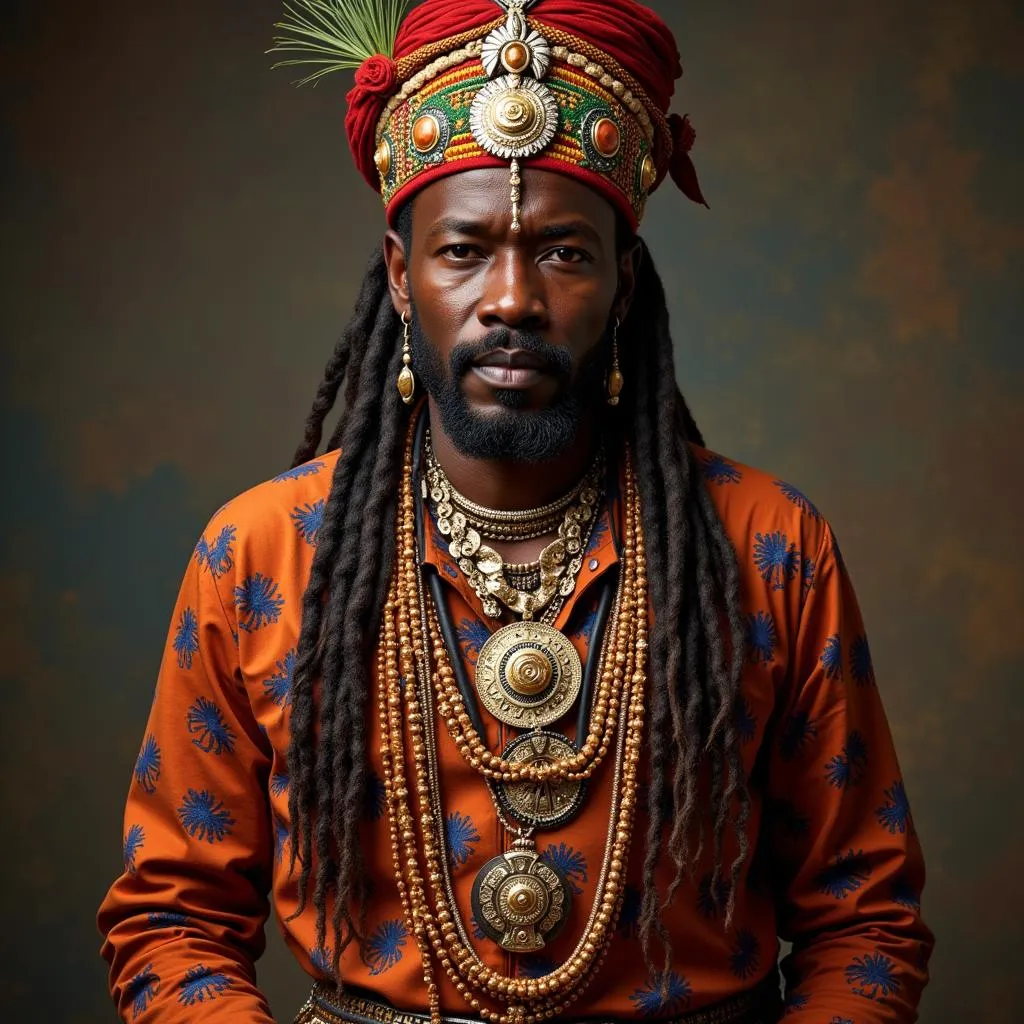Unraveling African Burial Ground Symbols: A Journey Through History and Culture
African Burial Ground Symbols offer a fascinating glimpse into the rich tapestry of African beliefs and traditions surrounding death and the afterlife. These symbols, often imbued with deep spiritual meaning, vary widely across the continent, reflecting the diversity of its cultures and histories. From elaborate grave markers to simple adornments, each symbol tells a story of remembrance, respect, and the enduring connection between the living and the dead.
The Significance of Symbols in African Burial Practices
Across Africa, death is not seen as an end, but rather a transition to the ancestral realm. Burial rituals and the symbols employed play a crucial role in facilitating this transition and honoring the deceased’s memory. These symbols act as a language, communicating not only with the ancestors but also with the living, conveying messages of hope, remembrance, and the continuity of life. They often represent the deceased’s social status, achievements, or beliefs, serving as a testament to their life on earth. For example, the use of specific colors, materials, or objects can symbolize the clan, profession, or spiritual affiliations of the deceased.
The placement of burial grounds themselves holds significance. Some communities choose locations believed to be spiritually potent, such as near sacred trees or bodies of water. Others prefer burial near the family home, signifying the continued presence of the deceased within the family circle. These choices reflect the deep connection between the physical and spiritual worlds in African cosmology.
Decoding Common African Burial Ground Symbols
While the specific symbols vary greatly across different cultures, some common themes and motifs emerge. Animals, for instance, often feature prominently, symbolizing strength, wisdom, or guidance. The lion, for example, can represent royalty and power, while the leopard might symbolize cunning and agility. Birds, often seen as messengers between the earthly and spiritual realms, can symbolize the soul’s journey to the afterlife. african cemetery memorial quotes can offer deeper insight into the specific meanings behind these symbols.
Geometric patterns, such as spirals and circles, are also common, often representing the cyclical nature of life, death, and rebirth. These patterns can also symbolize the interconnectedness of all things and the continuity of existence beyond the physical realm. Certain plants and trees hold specific meanings, often associated with healing, protection, or prosperity. For instance, the baobab tree, revered in many African cultures, can symbolize longevity, strength, and connection to the ancestors.
Regional Variations in African Burial Symbolism
The vastness and cultural diversity of Africa mean that burial practices and symbolism vary significantly from region to region. In West Africa, Adinkra symbols, often found on grave markers, convey complex proverbs and philosophical concepts related to life, death, and the afterlife. In East Africa, elaborate grave markers and the inclusion of personal belongings signify the deceased’s status and achievements. In Southern Africa, burial mounds and the use of specific stones and plants reflect beliefs about ancestral protection and guidance. african american slavery facts can sometimes offer context for the evolution of certain burial practices, particularly in the diaspora.
What do African Burial Symbols Tell Us?
Dr. Abimbola Adebayo, a renowned anthropologist specializing in African cultures, explains: “African burial ground symbols are not merely decorative elements; they are a powerful form of communication, expressing profound beliefs about life, death, and the relationship between the living and the dead.” These symbols offer invaluable insights into the spiritual beliefs, social structures, and artistic traditions of different African communities. They provide a tangible link to the past, allowing us to connect with the rich history and cultural heritage of the continent.
Professor Chinua Okonkwo, a leading expert on African art and symbolism, adds, “By studying these symbols, we gain a deeper understanding of African cosmology and the ways in which different cultures have grappled with the universal themes of mortality and the afterlife.” They serve as a reminder of the diversity and complexity of human experience, offering a window into the rich tapestry of African cultures.
Preserving and Understanding African Burial Traditions
As societies evolve, it’s crucial to preserve and understand these rich burial traditions. african babies deceased offers a poignant look at how these traditions continue to evolve and adapt to contemporary challenges. By learning about the symbols and rituals associated with African burial grounds, we can gain a deeper appreciation for the cultural heritage of the continent and the enduring connection between the living and the dead.
Conclusion
African burial ground symbols are a powerful testament to the rich cultural heritage of the continent. These symbols, varying widely in form and meaning, offer a fascinating glimpse into African beliefs about death, the afterlife, and the enduring connection between the living and the dead. By understanding these symbols, we gain a deeper appreciation for the diversity and complexity of African cultures and the importance of preserving these traditions for future generations.
FAQ
- What is the significance of animals in African burial symbolism?
- How do African burial practices reflect beliefs about the afterlife?
- What are some common geometric patterns found in African burial grounds?
- How do burial traditions vary across different regions of Africa?
- Why is it important to preserve and understand African burial traditions?
For further assistance, please contact us at Phone: +255768904061, Email: kaka.mag@gmail.com or visit us at Mbarali DC Mawindi, Kangaga, Tanzania. We have a 24/7 customer service team.

